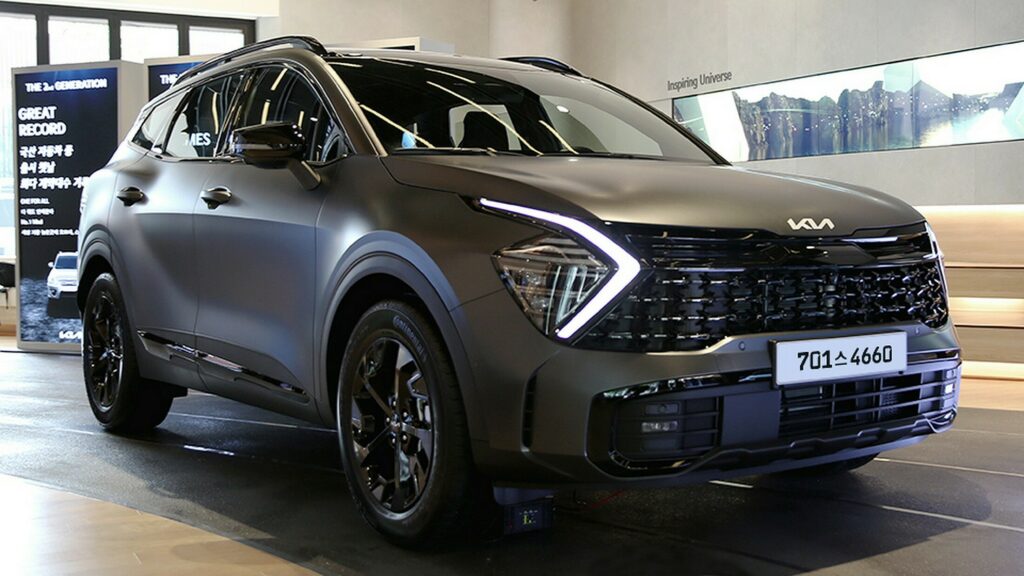Currently in its fifth generation, the Kia Sportage has come a long way since the 1993 original
July 20, 2023 at 06:09
 –>
–> 
–>
Kia celebrates the 30th anniversary of the Sportage with a special edition of the SUV which was introduced alongside the 2024 model year updates in South Korea.
The Kia Sportage 30th Anniversary Edition is based on the flagship Signature Gravity trim, adding a few visual touches. More specifically a glossy black finish has been applied on the grille, front and rear bumpers, lower doors, and 18-inch or 19-inch alloy wheels, matching the roof rack and mirror caps.
Inside, there is a choice between green and black shades for the quilted leather and suede upholstery. Standard equipment is quite generous, with the only optional features being the KRELL premium sound system, the Monitoring package, and the Panoramic Sunroof.
advertisement scroll to continue
More: 2023 Kia Picanto Gets Bolder Looks But Loses The Turbo Engine
All of the 2024 Kia Sportage trims come standard with new second-row side airbags. Furthermore, the SUV gains standard sound-insulating glass on the front windows, with the Signature trim expanding it to the rear windows as well. The powertrain lineup of the Sportage in the Korean market includes the 2.0-liter diesel, 2.0-liter LPG, turbocharged 1.6-liter petrol, and the more potent 1.6 Turbo Hybrid.
Pricing for the 2024 Sportage starts from ₩25,370,000 ($19,925), while the 30th Anniversary Edition costs between ₩34,810,000 ($27,399) and ₩41,970,000 ($33,031) depending on the powertrain. It remains to be seen if Kia brings the special edition to other markets in the near future.
[embedded content]
For the launch of the 30th Anniversary Edition, the automaker released a short film featuring the 1993 song Hyoga by the Korean artist Seo Taiji. Furthermore, the 1993 Sportage is exhibited alongside the 2024 model in the Kia 360 complex, next to old TV screens playing vintage commercials and LED displays showing the other generations of the SUV.
The first generation of the Kia Sportage – dubbed “the world’s first urban SUV” – was introduced in 1993. The first production model developed in Korea was based on the ladder-frame underpinnings of the Mazda Bongo LCV, resulting in respectable off-road credentials. Its successors that debuted in 2004, 2010, 2015, and 2021 respectively had more road-focused characters and offered much greater refinement thanks to the Hyundai genes and their unibody architectures.
